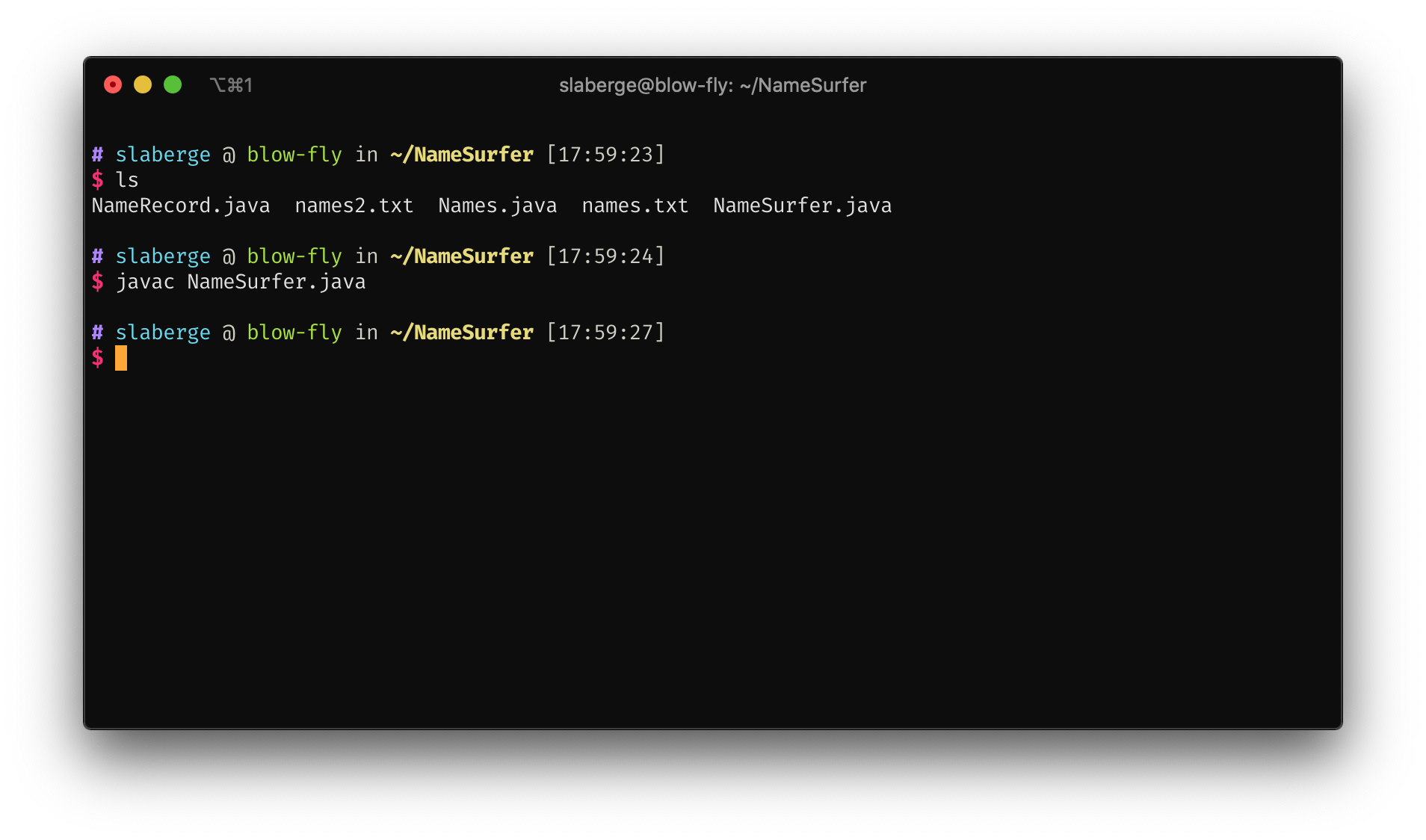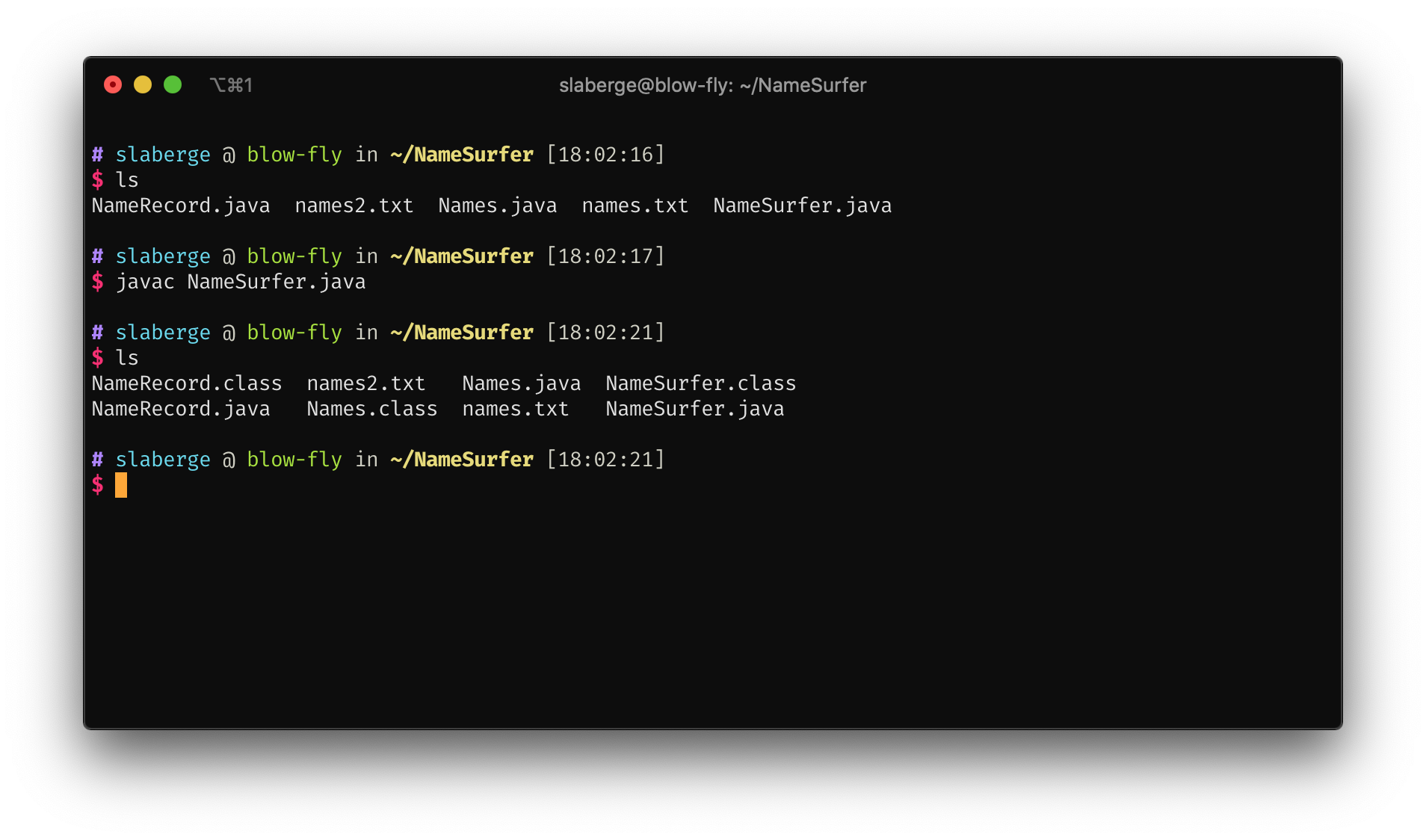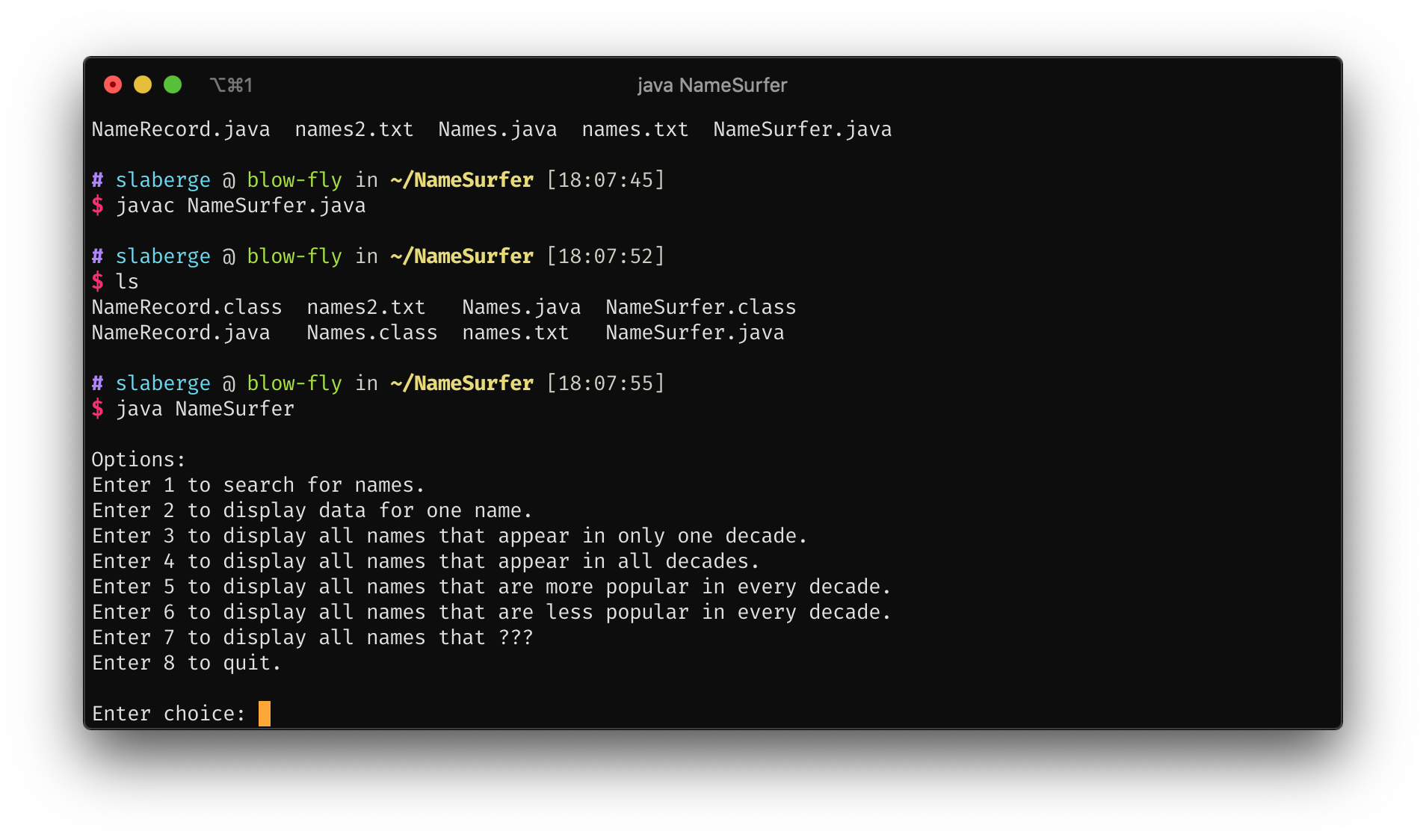Running Java Programs on Lab Machines #
Transferring your Program to the Lab Machines #
Firstly, transfer all the required .java and input
files to the lab machines using an SFTP application of
your choice. Put all of these files together in the same
directory. I’d recommend making a directory just for
these files because once we compile your program, it may
generate a lot of .class files, and we wouldn’t want to
clutter up another directory.
Now, connect to a lab machine using ssh and navigate to this directory using cd.
Compiling Your Program #
Once we are in the right directory, issue an ls
command. You should be able to see all of your .java
and input files.

Now, make sure you know the name of the class which has
your main method. For this example, my main method is
in the NameSurfer class, which is in the
NameSurfer.java file. So, to compile all of the classes
the main method in the NameSurfer class will require,
run this command:
javac <main Method Class Name>.java
If your code is free of errors and warnings, you shouldn’t see any output.

Now, if you issue another ls command, you will be able to
see all of the .class files as a result of the
compilation.

Running Your Java Program #
To run your program, you will once again need to know the
name of the class which contains your main method. In
this example, it is once again NameSurfer. To run your
program with this main method, issue the java command:
java <main Method Class Name>
Notice that this command’s name, java does not end with
a “c” and you should not include any file extensions to
the class name.

If everything was successful, you should be running your Java program on a lab machine!
Make sure that your program works as intended in this environment since this is how TAs will be grading your assignments.